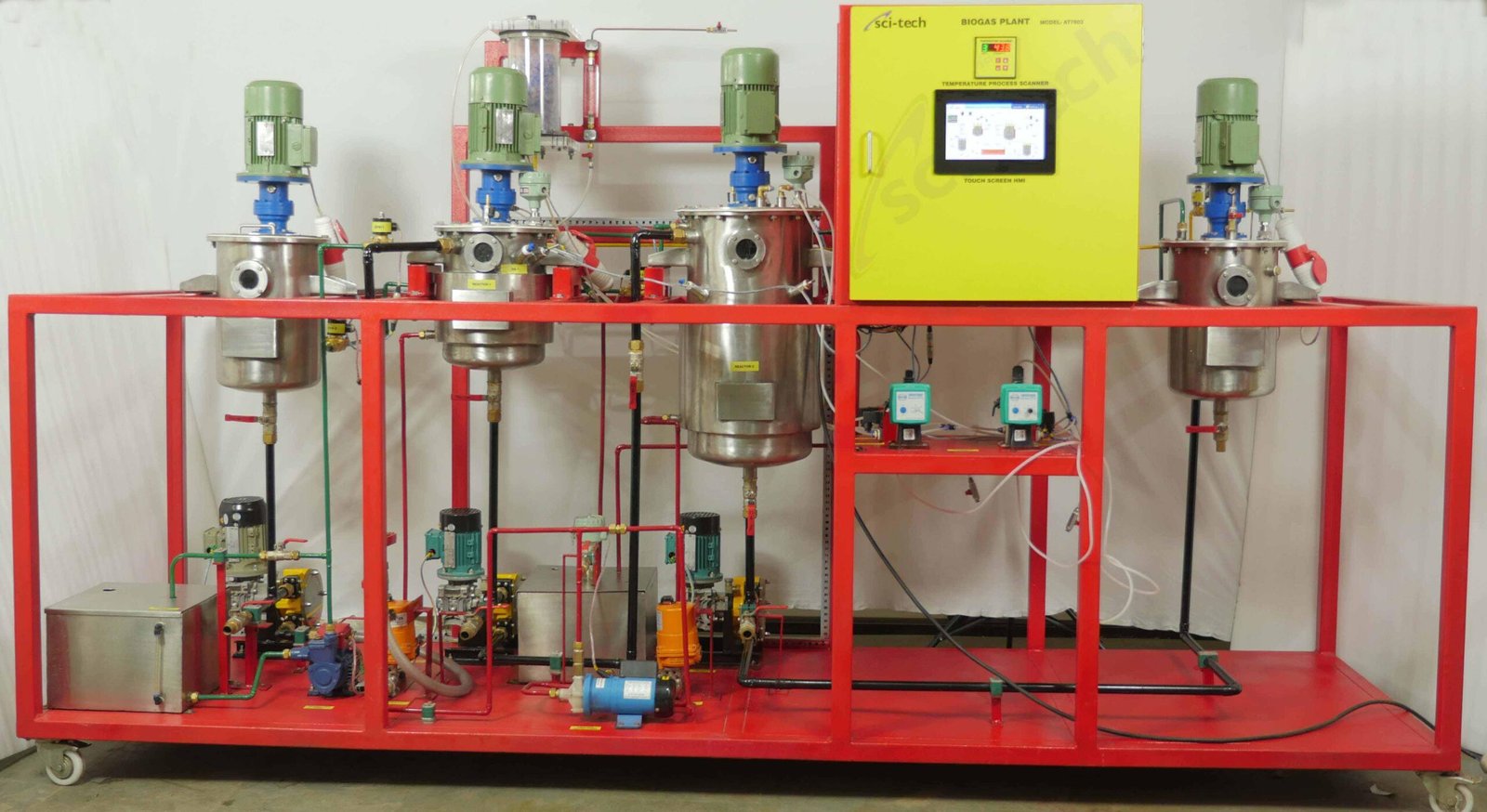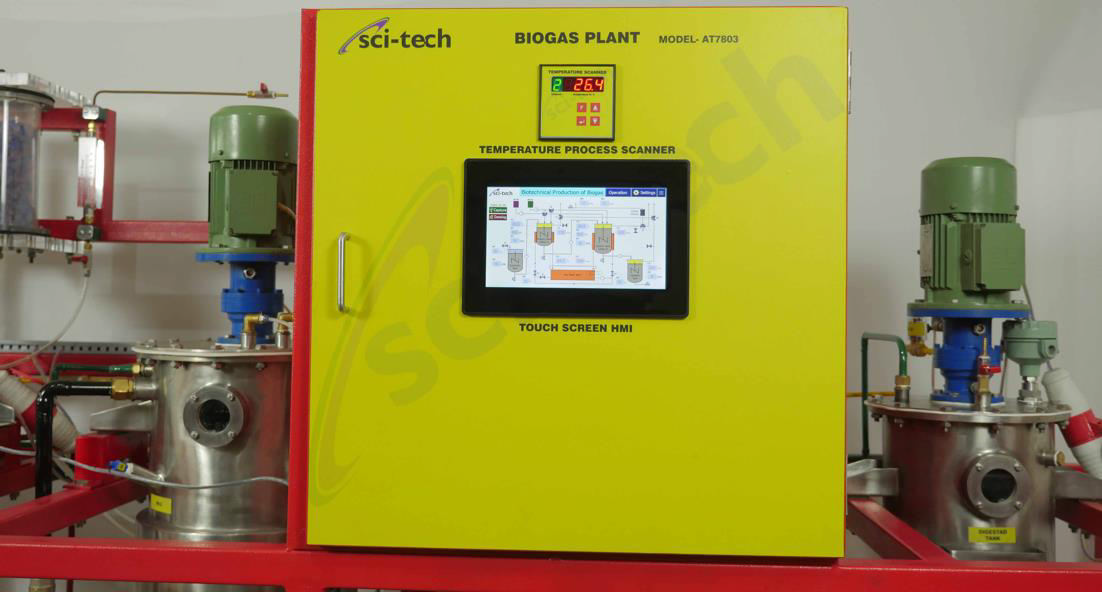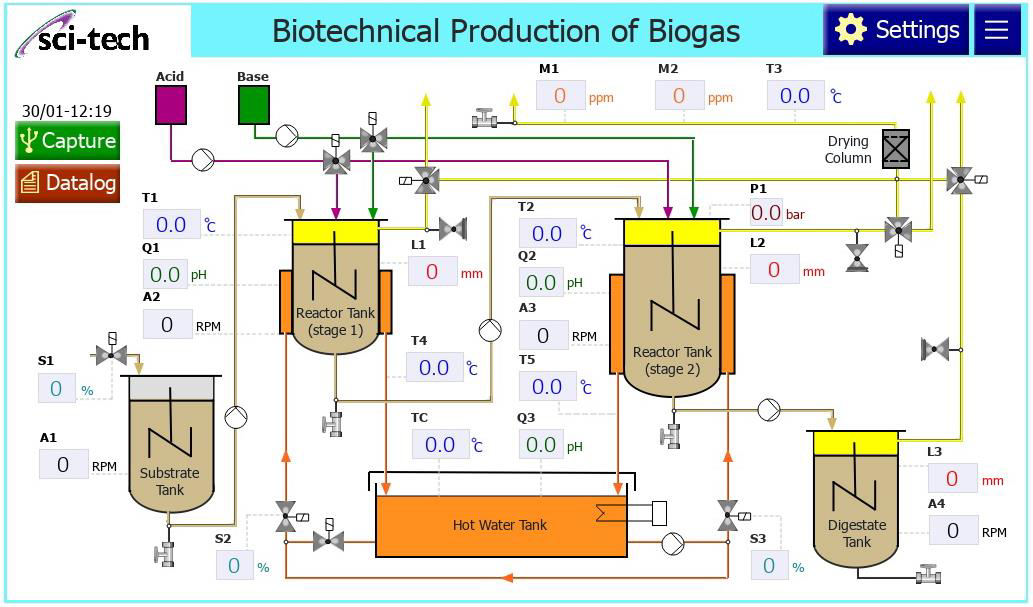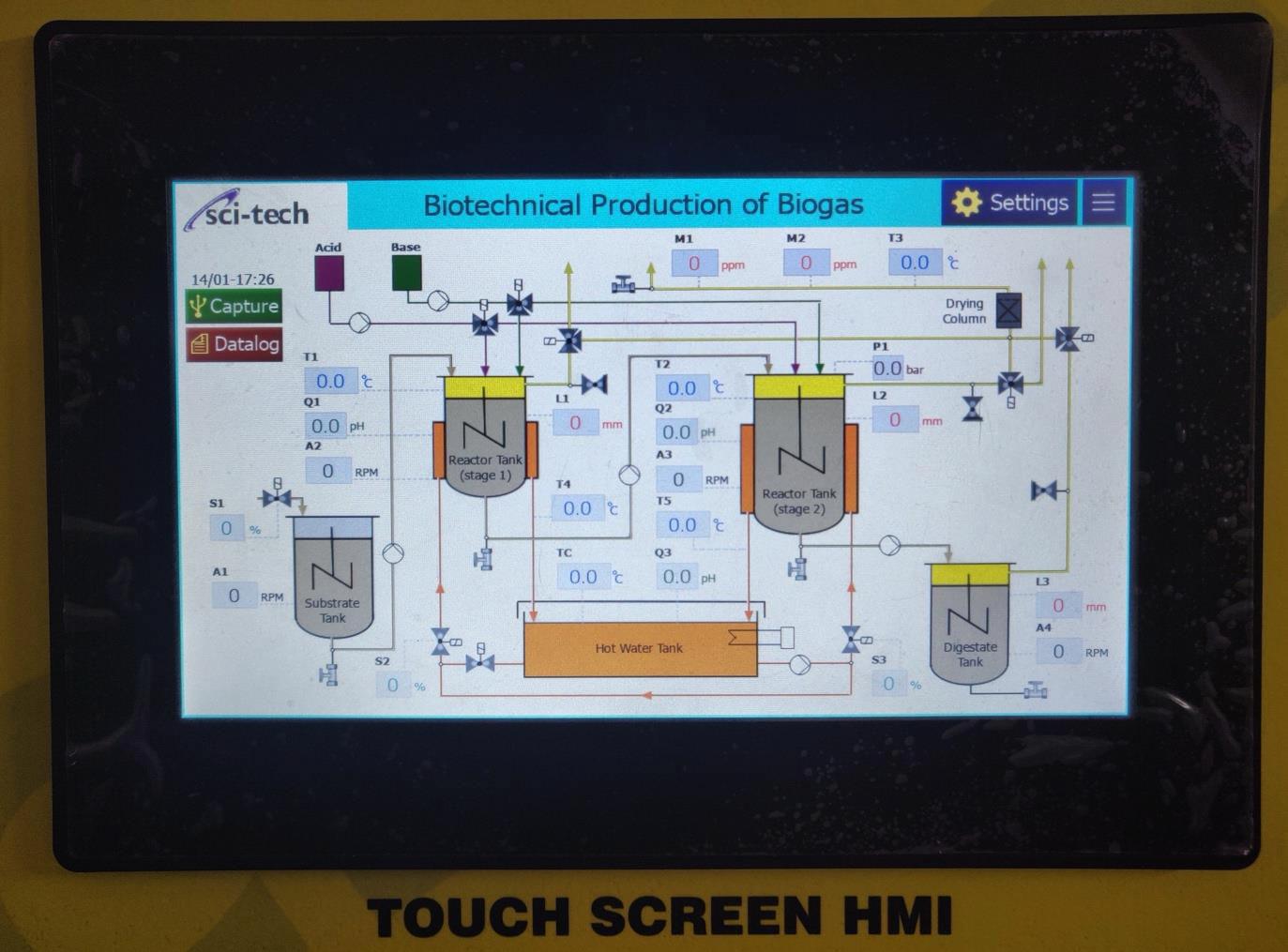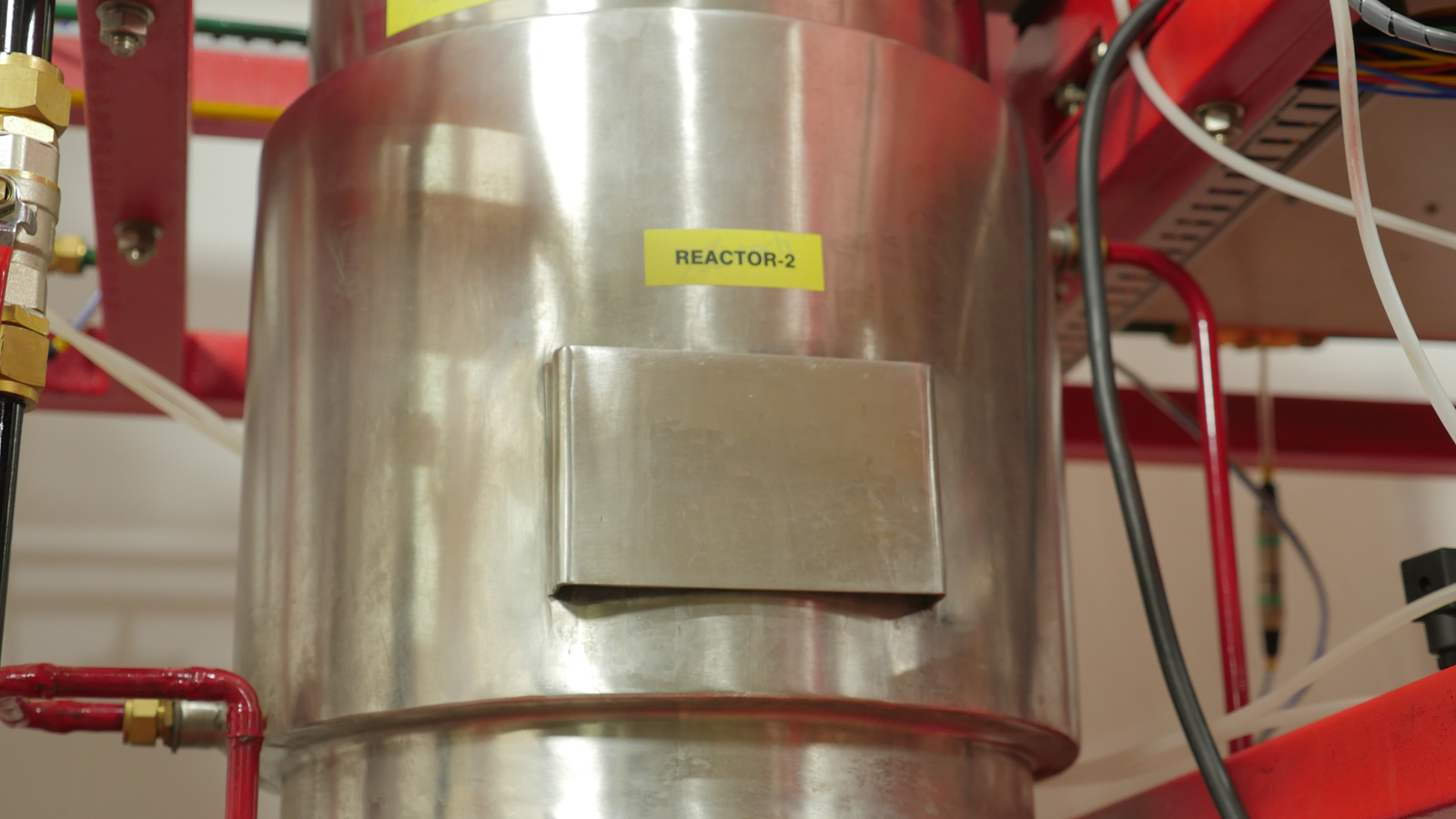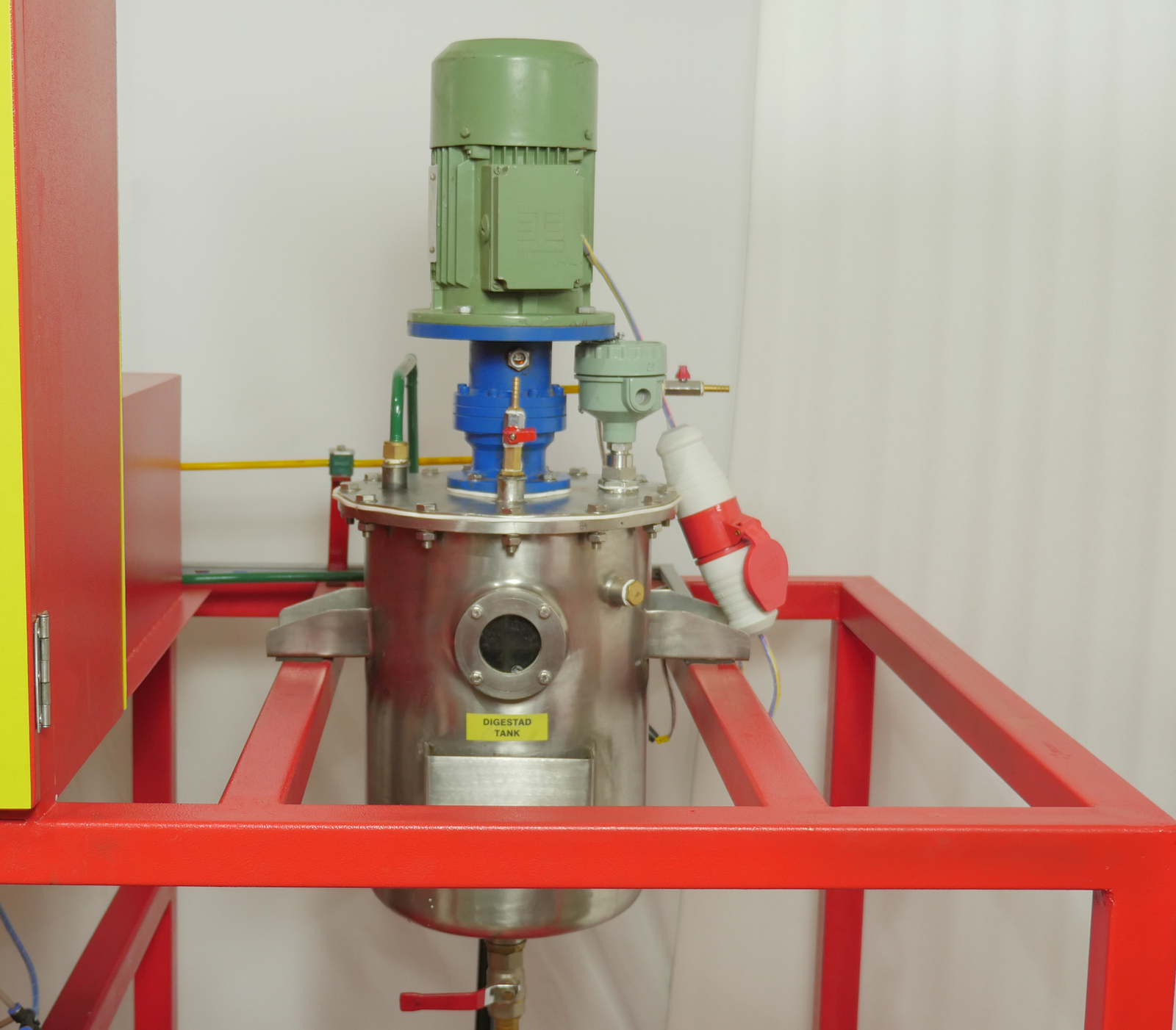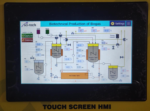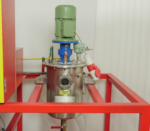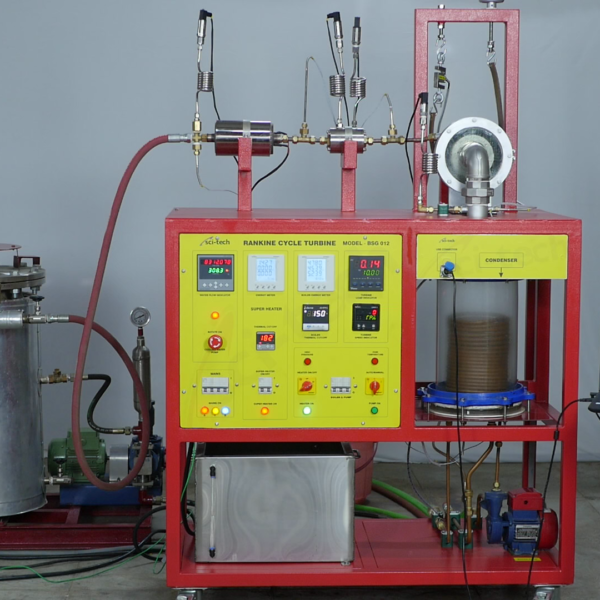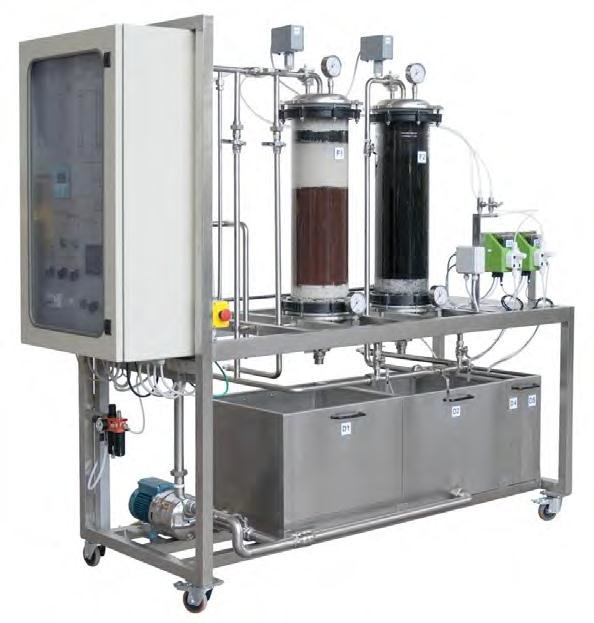Bio Gas Plant BSG 014
In a biogas plant, microorganisms biologically depredate the organic starting substances (substrate) under exclusion of light and oxygen. The product of this anaerobic degradation is a gas mixture, which primarily consists of methane. This gas mixture is called biogas.
The experimental Sci-tech Biogas Plant Model BSG 014 serves to demonstrate the generation of biogas in a practical manner.
Features
– Two-stage biogas plant
– Extensive biogas analysis
– System control using a PLC, touch screen for display and operation
DOWNLOAD BROCHURE:
BSG 014 Bio Gas Plant
In a biogas plant, microorganisms biologically depredate the organic starting substances (substrate) under exclusion of light and oxygen. The product of this anaerobic degradation is a gas mixture, which primarily consists of methane. This gas mixture is called biogas.
The experimental Sci-tech Biogas Plant Model BSG 014 serves to demonstrate the generation of biogas in a practical manner. The substrate is a suspension of shredded organic solids. It is hydrolyzed and acidified in the first stirred tank reactor. Here, anaerobic microorganisms convert the long-chain organic substances into short-chain organic substances. The biogas forms in the second stirred tank reactor in the last step of the anaerobic degradation. It contains mainly methane and carbon dioxide. This two-stage method enables the ambient conditions to be adjusted and optimized in both reactors separately. The digestate is collected in a separate tank.
Temperature and pH value are controlled in both reactors. The resulting biogas is dried in a column. The column is filled with silica gel. Subsequently, the flow rate, humidity, methane content, carbon dioxide content and temperature of the biogas are measured. The system is controlled by means of a ‘Sci-CalR’ PLC which is operated via a touch screen. The measured values can be transmitted to a PC via USB and analyzed with the software.
The experimental plant enables both a continuous and a discontinuous (batch) operation mode. Anaerobic biomass from a biogas plant is required for the experiments. E.g. potatoes or maize can be used to produce the substrate. An inert gas (e.g. carbon dioxide) is required to flush the experimental plant.
- 10” HMI panel front
- HDMI output for connection to a projector or an electronic whiteboard or a monitor
- In-built i3 computer processor & hard drive
- 16 to 32 analog and 16 to 32 32 digital input signal data-loggers
- PID Computer Control + Data Acquisition + Data Management.
- Compatible with actual Windows operating systems. Graphic and intuitive simulation of the process in screen. Compatible with the industry standards.
- Registration and visualization of all process variables in an automatic and simultaneous way.
- Flexible, open and multi-control software, developed with actual windows graphic systems, acting simultaneously on all process parameters.
- Analog and digital PID control.
- Menu for PID and set point selection required in the whole work range.
- Management, processing, comparison and storage of data.
- Sampling velocity up to 250 KS/s (Kilo samples per second).
- Calibration system for the sensors involved in the process.
- It allows the registration of the alarms state and the graphic representation in real time.
- Comparative analysis of the obtained data, after the process and modification of the conditions during the process.
- Open software, allowing to the teacher to modify texts, instructions. Teacher’s and student’s passwords to facilitate the teacher’s control on the student, and allowing the access to different work levels.
- This unit allows the 30 students of the classroom to visualize simultaneously all results and manipulation of the unit, during the process, by using a projector or an electronic whiteboard.
- This module requires Control Interface Module and Data Acquisition.
- Simultaneous visualization in the computer of all parameters involved in the process.
- Calibration of all sensors involved in the process.
- Real time curves representation about system responses.
- All the actuators’ values can be changed at any time from the keyboard allowing the analysis about curves and responses of the whole process.
- Shield and filtered signals to avoid external interferences.
- Real time PID control with flexibility of modifications from the computer keyboard of the PID parameters, at any moment during the process.
- Real time PID control for parameters involved in the process simultaneously.
- Proportional control, integral control and derivative control, based on the real PID mathematical formula, by changing the values, at any time, of the three control constants (proportional, integral and derivative constants).
- Open control allowing modifications, at any moment and in real time, of parameters involved in the process simultaneously.
- Three safety levels, one mechanical in the unit, another electronic in the control interface and the third one in the control software.
- Achieving a stable operating state
- Influence of the following parameters on the biogas generation
- temperature
- substrate
- volumetric loading
- pH value
- Influence of the operation mode on the biogas yield
- single stage or dual stage
- with and without post-fermentation
- continuous and discontinuous
- Determining the following parameters depending on the operating conditions
- biogas yield
- biogas flow rate
- biogas quality

